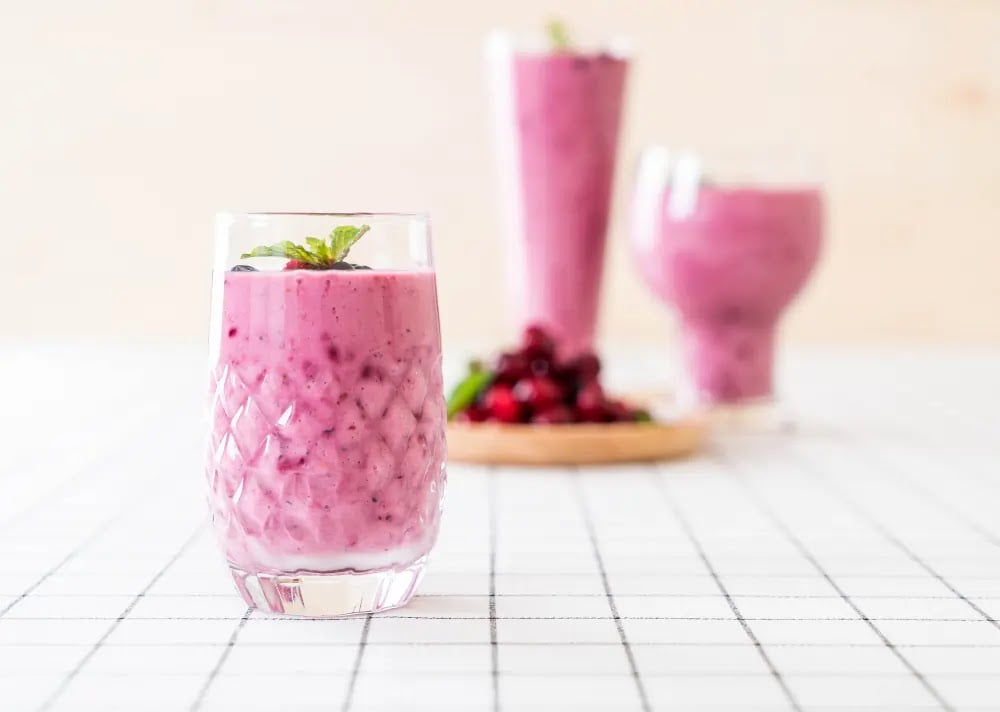Millet is not just another grain; it’s an ancient wonder that’s making a grand comeback in modern diets. In this article, we’ll explore the fascinating world of millet, from its history to its health benefits, and even some delicious recipes to try. Whether you’re a foodie or someone on a quest for nutritious choices, millet is worth a closer look.
What Is Millet?
A millet is a small-seeded grain that belongs to the grass family. It is highly versatile and widely cultivated for its nutritional value and adaptability to various climates. Millet grains come in different colors, including yellow, white, and red, and they have a mild, nutty flavor. This ancient grain has been a staple food in many parts of the world, particularly in Africa and Asia, for thousands of years.
Millet is known for its resilience in harsh growing conditions, such as drought and poor soil quality. It requires less water compared to other grains like rice and wheat, making it a sustainable crop choice. Millet is also gluten-free, which makes it suitable for individuals with gluten sensitivities or celiac disease.
In terms of nutrition, millet is rich in fiber, protein, and essential minerals like magnesium, phosphorus, and iron. It also contains antioxidants and various vitamins, including B vitamins like niacin and thiamine. The combination of these nutrients makes millet a nutritious addition to a balanced diet.
Millet can be prepared in several ways, such as boiling, steaming, or roasting. It can be used as a substitute for rice or couscous, made into porridge, or ground into flour for baking. Millet is commonly used in traditional dishes like pilafs, stews, and flatbreads, and it is increasingly gaining popularity in modern recipes due to its unique taste and nutritional benefits.
Overall, millet is a versatile and nutritious grain that offers a range of culinary possibilities while providing essential nutrients for a healthy diet.
The History of Millet
Millet’s history dates back to ancient times when it was cultivated in China, Africa, and India. It was one of the first grains to be domesticated and played a crucial role in early human civilizations. It is believed to have originated in Africa and was one of the first grains to be cultivated by early civilizations. Millet cultivation spread to Asia and Europe, where it became an important staple crop. In ancient China, millet was considered one of the five sacred grains alongside rice, wheat, barley, and soybeans.
Throughout history, millet has played a crucial role in the diets of various cultures. It served as a primary food source for many civilizations, particularly in regions where other grains were not as suitable for cultivation. Millet’s drought-resistant nature and ability to grow in diverse climates made it a valuable crop, especially in arid and semi-arid regions.
Millet has been an integral part of traditional cuisines, used in a variety of dishes such as porridge, bread, and fermented beverages. It has also been utilized in animal feed and as a base for alcoholic beverages. Millet’s versatility and nutritional value have contributed to its enduring popularity across different cultures.
In recent years, millet has gained attention for its health benefits and gluten-free properties. It is considered a nutritious grain alternative and is increasingly incorporated into modern diets as a result. With its long-standing history and continued relevance, millet remains an important grain in the global food landscape.
Nutritional Value of Millet
Millet is a nutritional powerhouse. It’s gluten-free and rich in essential nutrients, such as vitamins, minerals, and antioxidants. It’s also a great source of dietary fiber. Millet is a highly nutritious grain that offers various health benefits. In terms of nutritional value per 100 grams, millet typically contains approximately 378 calories, 11 grams of protein, 73 grams of carbohydrates, 4 grams of fat, and 9 grams of fiber. It is also a good source of essential minerals such as iron, magnesium, and phosphorus, as well as B vitamins. Including millet in your diet can contribute to a well-rounded and nourishing meal plan.
Types and Health Benefits of Millet

There are several types of millet, each with its own distinct characteristics. Here are some common types of millet:
1. Pearl Millet (Pennisetum glaucum): Also known as Bajra, Pearl Millet is one of the most widely cultivated types. It has a high nutritional value, rich in protein, fiber, and minerals. Pearl Millet is commonly used in porridge, flatbreads, and fermented beverages.
2. Finger Millet (Eleusine coracana): Finger Millet, also called Ragi, is known for its small finger-like grains. It is highly nutritious and rich in calcium, iron, and amino acids. Finger Millet is often used to make porridge, malted beverages, and baked goods.
3. Foxtail Millet (Setaria italica): Foxtail Millet gets its name from the shape of its seed heads, resembling a fox’s tail. It is rich in dietary fiber, protein, and minerals. Foxtail Millet is commonly used in pilafs, porridge, and as a rice substitute.
4. Proso Millet (Panicum miliaceum): Proso Millet, also known as Common Millet, has a mild, nutty flavor. It is a versatile grain used in a variety of dishes, including porridge, and salads, and as a gluten-free flour alternative.
5. Barnyard Millet (Echinochloa spp.): Barnyard Millet, also called Sanwa Millet, is known for its quick growth and short growing season. It is gluten-free and rich in fiber, minerals, and antioxidants. Barnyard Millet is used in porridge, upma, and as a rice substitute.
These are just a few examples of the diverse types of millet available. Each type offers unique flavors, textures, and nutritional profiles, making millet a versatile and healthy choice for various culinary applications.
Millet offers an array of health benefits that make it an excellent addition to your diet.
1. Heart Health
Millet is low in saturated fat and cholesterol, making it heart-friendly. Its high fiber content helps in reducing the risk of heart disease.
2. Weight Management
The fiber in millet keeps you feeling full, aiding in weight management. It also has a low glycemic index, which helps stabilize blood sugar levels.
3. Digestive Health
Millet’s fiber content supports a healthy digestive system, preventing constipation and promoting gut health.
4. Gluten-Free Alternative
For those with gluten intolerance, millet is a safe and tasty alternative to wheat and barley.
5. Rich in Antioxidants
Millet contains antioxidants that help protect the body from oxidative stress and reduce the risk of chronic diseases.
Cooking with Millet
Millet is versatile and can be used in various dishes. Here are some ways to incorporate it into your meals.
1. Millet Porridge
Start your day with a warm and hearty millet porridge, topped with your favorite fruits and nuts.
2. Millet Salad
Toss cooked millet with fresh vegetables, olive oil, and a dash of lemon juice for a refreshing salad.
3. Millet Pilaf
Create a flavorful millet pilaf with herbs and spices of your choice, a delicious and wholesome side dish.
4. Millet Baking
Millet flour can be used in baking to make gluten-free bread, muffins, and cookies.
Where to Find Millet
Millet is available in most health food stores, grocery stores, and online. You can choose between whole millet grains, millet flour, or other millet-based products.
Conclusion
millet is a fantastic ancient grain that not only boasts a rich history but also offers numerous health benefits. From its heart-healthy properties to its versatility in the kitchen, millet deserves a prominent place in your diet. So, why not give it a try and savor the goodness of this nutritious and delicious grain? Your body will thank you for it!
FAQs
1. Is millet suitable for gluten-free diets?
Yes, millet is naturally gluten-free, making it an excellent choice for those with gluten intolerance.
2. Can I use millet as a rice substitute?
Absolutely! Millet can replace rice in many recipes, offering a unique and nutty flavor.
3. How do I store millet properly?
Store millet in an airtight container in a cool, dry place to keep it fresh.
4. What are the different types of millet, and how do they differ?
There are various types of millet, each with its unique taste and texture. Experiment to find your favorite!
5. Are there any potential allergens in millet?
Millet is generally considered safe and allergen-free, but individuals with specific food allergies should consult a healthcare professional.






 Afrikaans
Afrikaans Albanian
Albanian Amharic
Amharic Arabic
Arabic Armenian
Armenian Azerbaijani
Azerbaijani Basque
Basque Belarusian
Belarusian Bengali
Bengali Bosnian
Bosnian Bulgarian
Bulgarian Catalan
Catalan Cebuano
Cebuano Chichewa
Chichewa Chinese (Simplified)
Chinese (Simplified) Chinese (Traditional)
Chinese (Traditional) Corsican
Corsican Croatian
Croatian Czech
Czech Danish
Danish Dutch
Dutch English
English Esperanto
Esperanto Estonian
Estonian Filipino
Filipino Finnish
Finnish French
French Frisian
Frisian Galician
Galician Georgian
Georgian German
German Greek
Greek Gujarati
Gujarati Haitian Creole
Haitian Creole Hausa
Hausa Hawaiian
Hawaiian Hebrew
Hebrew Hindi
Hindi Hmong
Hmong Hungarian
Hungarian Icelandic
Icelandic Igbo
Igbo Indonesian
Indonesian Irish
Irish Italian
Italian Japanese
Japanese Javanese
Javanese Kannada
Kannada Kazakh
Kazakh Khmer
Khmer Korean
Korean Kurdish (Kurmanji)
Kurdish (Kurmanji) Kyrgyz
Kyrgyz Lao
Lao Latin
Latin Latvian
Latvian Lithuanian
Lithuanian Luxembourgish
Luxembourgish Macedonian
Macedonian Malagasy
Malagasy Malay
Malay Malayalam
Malayalam Maltese
Maltese Maori
Maori Marathi
Marathi Mongolian
Mongolian Myanmar (Burmese)
Myanmar (Burmese) Nepali
Nepali Norwegian
Norwegian Pashto
Pashto Persian
Persian Polish
Polish Portuguese
Portuguese Punjabi
Punjabi Romanian
Romanian Russian
Russian Samoan
Samoan Scottish Gaelic
Scottish Gaelic Serbian
Serbian Sesotho
Sesotho Shona
Shona Sindhi
Sindhi Sinhala
Sinhala Slovak
Slovak Slovenian
Slovenian Somali
Somali Spanish
Spanish Sundanese
Sundanese Swahili
Swahili Swedish
Swedish Tajik
Tajik Tamil
Tamil Telugu
Telugu Thai
Thai Turkish
Turkish Ukrainian
Ukrainian Urdu
Urdu Uzbek
Uzbek Vietnamese
Vietnamese Welsh
Welsh Xhosa
Xhosa Yiddish
Yiddish Yoruba
Yoruba Zulu
Zulu